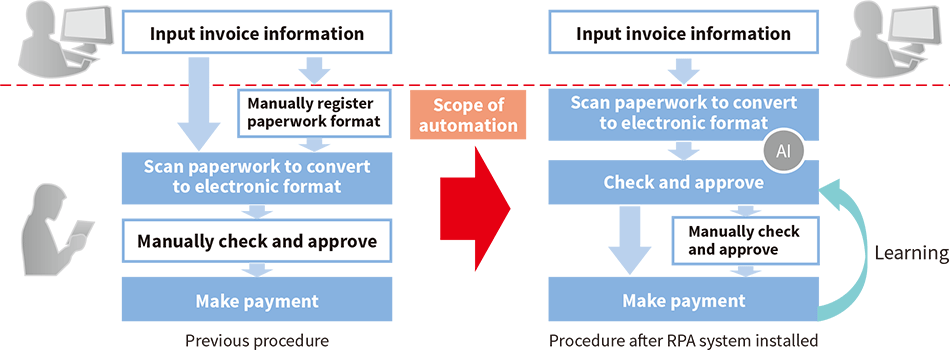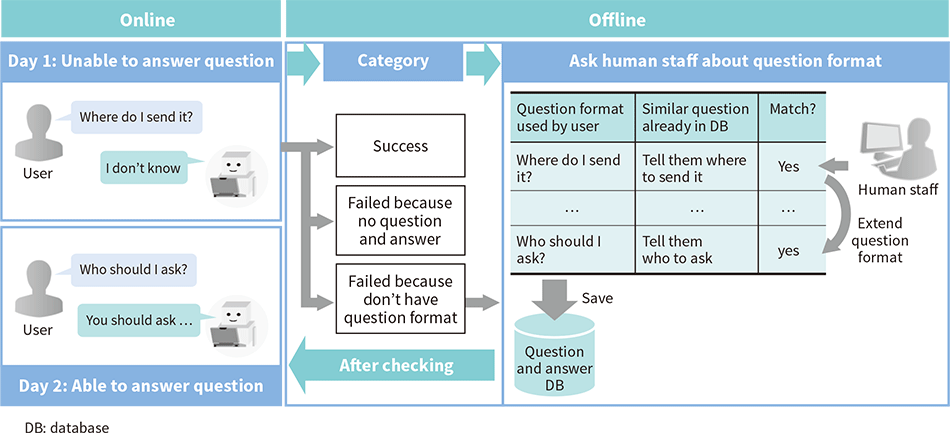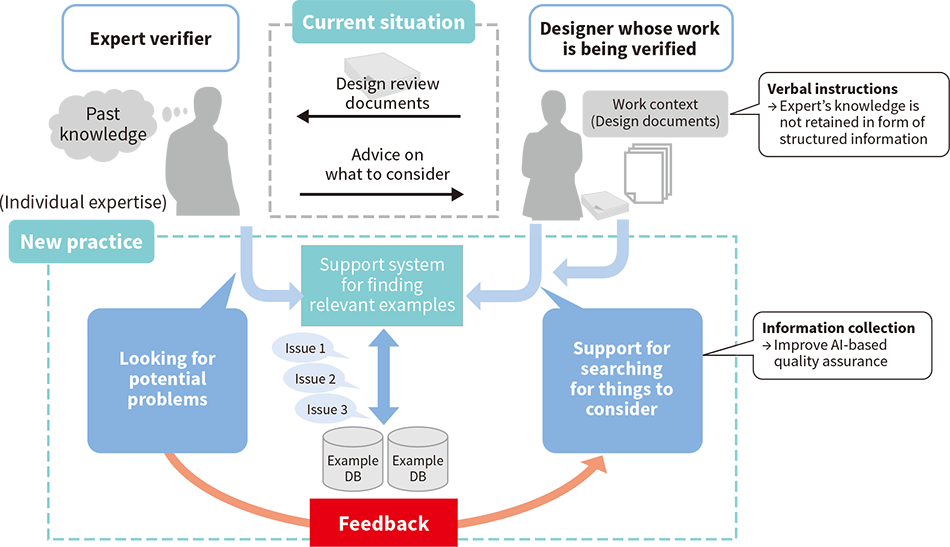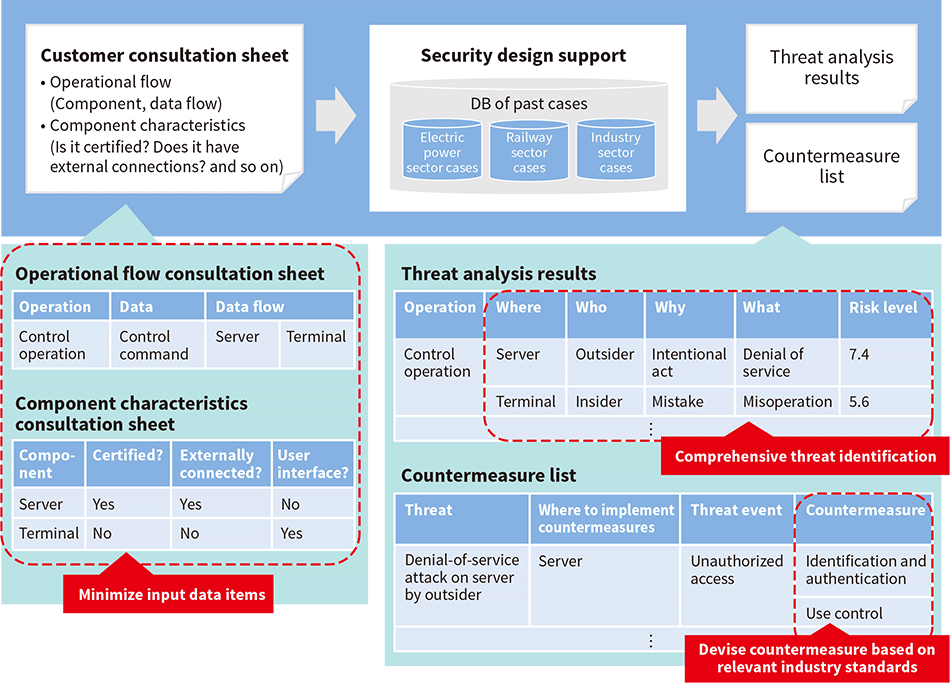8. Robotic Process Automation
A variety of companies are currently adopting robotic process automation (RPA), whereby software robots are used to automate auxiliary tasks to alleviate labor shortages and improve work productivity. Like a conventional robot, the term “software robot” refers to software that performs tasks in the same way as a human. The RPA currently being introduced is class 1 (the automation of tasks that can be clearly defined by rules), while class 2 (the automation of tasks that require intelligence, such as recognition and decision-making) is expected to attract rising interest in the future.
In terms of class 2 RPA, Hitachi is working on research into automating, (1) Recognition of input data in diverse formats, and (2) Decision-making under a variety of circumstances where the formulation of rules is difficult. For (1), Hitachi has achieved successful automation by using previously developed recognition techniques for things like text, images, audio, language, and human behavior as a base. For (2), automation has been achieved by collecting data handled by the business and using it for learning. Trials have already been conducted at Hitachi businesses for the following three activities.
- (1) Accounts documentation checking
- A system was developed to automate the work from the scanning of accounts paperwork through to approval. The system automated the checking process used to identify payments (including who and how much to pay) from accounts paperwork by utilizing documentation checking techniques designed for financial institutions and knowledge acquired by using data from past accounts handling work for learning. Whereas this accounts data had to be checked manually in the past, the ability to acquire the knowledge for accounts documentation checking from past data made it possible to implement a low-cost documentation checking system. A trial of accounts handling work at Hitachi found that 70% of accounts paperwork could be checked automatically. The technique was incorporated into the business system and commenced operation from October 2017, with the aim of commencing full-scale use in FY2018 (see Figure 8.1).
- (2) Inquiry handling
- A system was developed to provide automatic responses to inquiries about in-house procedures. A technique was developed for the efficient collation of an inquiry database from past data held by the company on responses to inquiries, and also another self-growing interaction technique that builds knowledge of how to respond to inquiries by requesting more information on those inquiries that are not able to be answered. While the automation of inquiry handling requires an efficient way to build up a database of inquiry responses, these techniques enable this to be done by computer in a semi-automatic manner. In a pilot study involving actual inquiry handling at Hitachi, the system was able to respond automatically to more than 60% of inquiries. A full trial commenced in October 2017 (see Figure 8.2).
- (3) Quality assurance
- A system was developed to provide relevant examples of past non-compliance for use in the design review process. The system first performs learning using a database of past non-compliance examples. The documentation for the design being reviewed is then loaded into the system to help identify past examples and things that designers should look at. The system also seeks to improve its accuracy through ongoing learning of how expert staff select from search results. A trial is currently in progress in collaboration with an operational department. The trial commenced in October 2017 aimed at verifying the benefits for design review efficiency of providing an efficient way to look for relevant examples of past failures (see Figure 8.3).
- The AI techniques used in these newly developed RPA systems for tasks that require intelligence have extensive potential applications for auxiliary tasks, such as recognition and decision-making. Accordingly, they have been defined as Lumada use cases to facilitate their practical deployment in Hitachi and elsewhere. While one of the challenges of AI is the time taken for the learning phase, including changing the techniques used based on the nature of the task, this work has accelerated the development of solutions that use AI by utilizing, across different applications, techniques with benefits that have already been demonstrated using in-house business data.
8.1. Flowchart of accounts handling after automation of documentation checking
8.2. Presentation of things identified by system as requiring confirmation, and associated outcomes
8.3. Interactive solution using self-growing technique for interaction















